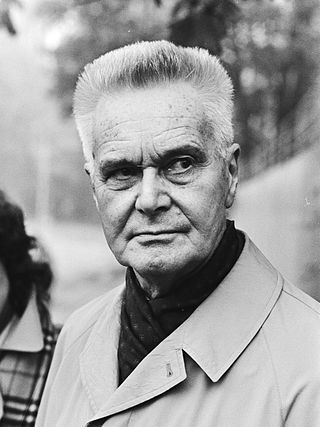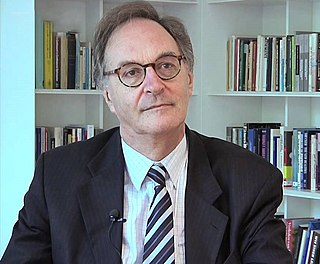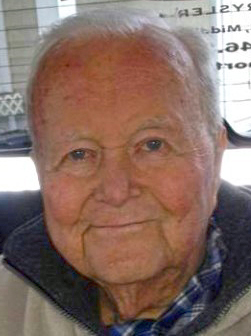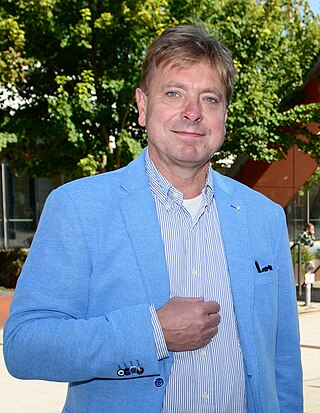Related Research Articles

Jan Tinbergen was a Dutch economist who was awarded the first Nobel Memorial Prize in Economic Sciences in 1969, which he shared with Ragnar Frisch for having developed and applied dynamic models for the analysis of economic processes. He is widely considered to be one of the most influential economists of the 20th century and one of the founding fathers of econometrics.

Erasmus University Rotterdam is a public research university located in Rotterdam, Netherlands. The university is named after Desiderius Erasmus Roterodamus, a 15th-century Christian humanist and theologian.
The economic lot scheduling problem (ELSP) is a problem in operations management and inventory theory that has been studied by many researchers for more than 50 years. The term was first used in 1958 by professor Jack D. Rogers of Berkeley, who extended the economic order quantity model to the case where there are several products to be produced on the same machine, so that one must decide both the lot size for each product and when each lot should be produced. The method illustrated by Jack D. Rogers draws on a 1956 paper from Welch, W. Evert. The ELSP is a mathematical model of a common issue for almost any company or industry: planning what to manufacture, when to manufacture and how much to manufacture.

The vehicle routing problem (VRP) is a combinatorial optimization and integer programming problem which asks "What is the optimal set of routes for a fleet of vehicles to traverse in order to deliver to a given set of customers?" It generalises the travelling salesman problem (TSP). It first appeared in a paper by George Dantzig and John Ramser in 1959, in which the first algorithmic approach was written and was applied to petrol deliveries. Often, the context is that of delivering goods located at a central depot to customers who have placed orders for such goods. The objective of the VRP is to minimize the total route cost. In 1964, Clarke and Wright improved on Dantzig and Ramser's approach using an effective greedy algorithm called the savings algorithm.
Material theory is the sub-specialty within operations research and operations management that is concerned with the design of production/inventory systems to minimize costs: it studies the decisions faced by firms and the military in connection with manufacturing, warehousing, supply chains, spare part allocation and so on and provides the mathematical foundation for logistics. The inventory control problem is the problem faced by a firm that must decide how much to order in each time period to meet demand for its products. The problem can be modeled using mathematical techniques of optimal control, dynamic programming and network optimization. The study of such models is part of inventory theory.
The dynamic lot-size model in inventory theory, is a generalization of the economic order quantity model that takes into account that demand for the product varies over time. The model was introduced by Harvey M. Wagner and Thomson M. Whitin in 1958.

Ravindra K. Ahuja is an Indian-born American computer scientist and entrepreneur. He is currently Professor of Industrial and Systems Engineering at the University of Florida in Gainesville, Florida, and CEO of the automation and optimization solutions provider Optym, which he founded in 2000 as Innovative Scheduling, Inc.

Alexander Hendrik George Rinnooy Kan is a Dutch politician, businessman and mathematician who served as Chairman of the Social and Economic Council from 2006 to 2012. A member of the Democrats 66 (D66) party, he was a member of the Senate from 2015 to 2019 and is a distinguished professor of Economics and Business Studies at the University of Amsterdam since 1 September 2012. He has also been president of the supervisory board of EYE Film Institute Netherlands since 2008 and of Museum Boerhaave since 2018.
Harvey Maurice Wagner was an American management scientist, consultant, and Professor of Operations Research and Innovation Management at the University of North Carolina, Chapel Hill, known for his books on Operations Research and his seminal work on the dynamic lot-size model with Thomson M. Whitin.

Thomson McLintock Whitin was an American management scientist, and Emeritus Professor of Economics and Social Sciences at Wesleyan University, known for his work on inventory control and inventory management.
Econometric Institute at the Erasmus University Rotterdam is a leading research institute in the fields of econometrics and management science in the Netherlands. The Institute offers advanced education in econometrics. It was founded in 1956 by Henri Theil in cooperation with Jan Tinbergen.
Teunis (Teun) Kloek is a Dutch economist and Emeritus Professor of Econometrics at the Erasmus Universiteit Rotterdam. His research interests centered on econometric methods and their applications, especially nonparametric and robust methods in econometrics.
Herman Koene van Dijk is a Dutch economist Consultant at the Research Department of Norges Bank and Professor Emeritus at the Econometric Institute of the Erasmus University Rotterdam, known for his contributions in the field of Bayesian analysis.

Philippus Henricus Benedictus Franciscus "Philip Hans" Franses is a Dutch economist and Professor of Applied Econometrics and Marketing Research at the Erasmus University Rotterdam, and dean of the Erasmus School of Economics, especially known for his 1998 work on "Nonlinear Time Series Models in Empirical Finance."
Patrick John Fitzgerald (Patrick) Groenen is a Dutch economist and Professor of Statistics at the Erasmus School of Economics (ESE) of the Erasmus University Rotterdam, known for his work in the fields of exploratory factor analysis, multidimensional scaling and numerical algorithms in these fields.
Anthonius Wilhelmus Johannes (Antoon) Kolen was a Dutch mathematician and Professor at the Maastricht University, in the Department of Quantitative Economics. He is known for his work on dynamic programming, such as interval scheduling and mathematical optimization.
Constantinus P. M. van Hoesel is a Dutch mathematician, and Professor of Operations Research at the Maastricht University, and head of its Quantitative Economics Group, known for his work on mathematical optimization.
Christiaan Heij is a Dutch mathematician, Assistant Professor in statistics and econometrics at the Econometric Institute at the Erasmus University Rotterdam, known for his work in the field of mathematical systems theory, and econometrics.
Maria Teresa Rocha de Magalhães Melo is a Portuguese mathematician and operations researcher who works as a professor in the business school of the Saarland University of Applied Sciences, a Fachhochschule in Saarbrücken, Germany. Her research interests include facility location, supply chain management, and in-hospital patient transport.
References
- ↑ Brahimi, Nadjib, et al. "Single item lot sizing problems." European Journal of Operational Research 168.1 (2006): 1-16.
- ↑ Pochet, Yves, and Laurence A. Wolsey. Production planning by mixed integer programming. Springer, 2006.
- ↑ Albert P. M. Wagelmans at the Mathematics Genealogy Project
- ↑ "Moeilijk doen als het ook makkelijk kan (2002)" (PDF). Archived from the original (PDF) on 2007-07-11. Retrieved 2014-09-24.
- ↑ Curriculum vitae Albert Wagelmans Archived 2009-04-24 at the Wayback Machine , sept 2006 at people.few.eur.nl. Accessed Sept. 25, 2014.
- 1 2 Lee, Sila & Wagelmans (2001)
- ↑ Jaruphongsa, Wikrom, Sila Cetinkaya, and Chung-Yee Lee. "Warehouse space capacity and delivery time window considerations in dynamic lot-sizing for a simple supply chain." International Journal of Production Economics 92.2 (2004): 169-180.
- 1 2 Huisman, Freling and Wagelmans (2005, p. 1)
- ↑ Albert Wagelmans publications indexed by Google Scholar
- ↑ Albert P. M. Wagelmans at DBLP Bibliography Server